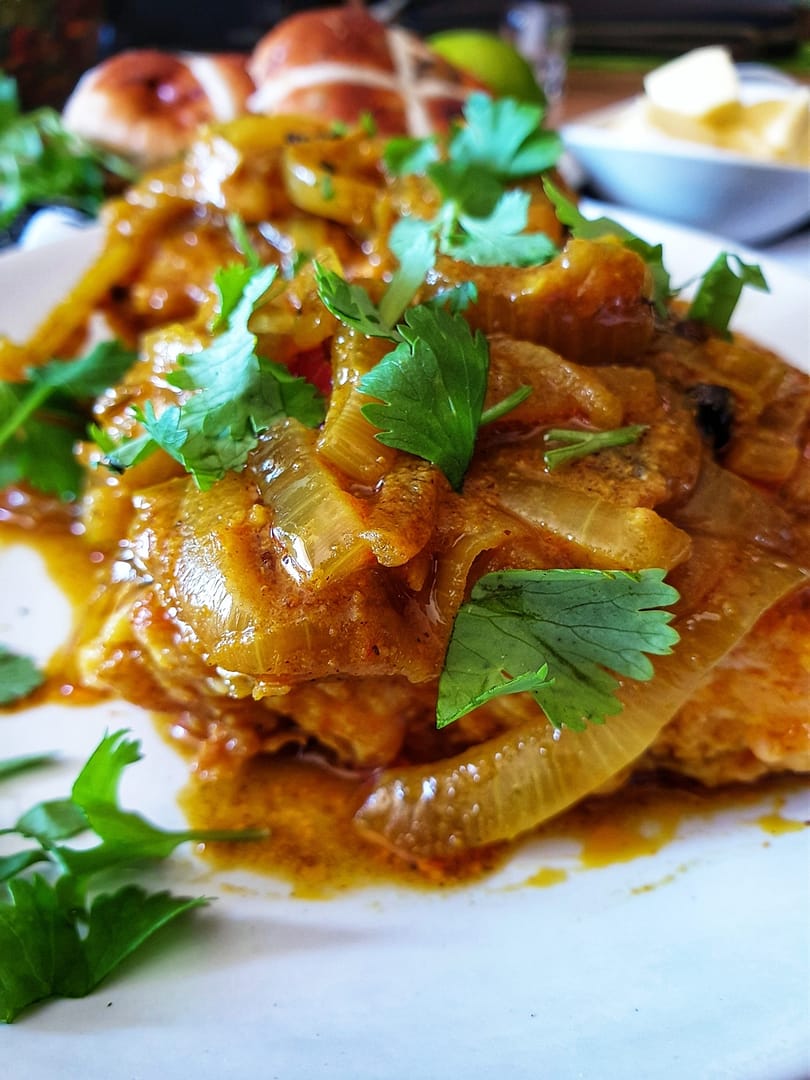
Pickled Fish Recipe
This flavorful Traditional South African, Cape Malay Pickled Fish is typically eaten over Easter after a 48 hour marinade in curried and pickled onions. The marinade includes bay leaves, curry powder, white fish and onions to mention a few.
Pickled fish is a large food celebration in South Africa over the easter weekend and is said to have originated in Cape Town with the Cape Malay Community.
While there are many versions to pickled fish recipes, they all always taste so good! This recipe is a spicy, slightly hot, delicious and traditional family recipe. To get the best taste from this pickled fish, prepare it in advance and refrigerate it for 2 to 3 days before serving. You have to hide it away from everyone😉
Picked fish is mainly to replace the eating of meat ( by religious tradition) on Good Friday, but we serve it throughout the weekend. Making more than you think you need, is probably best so that it can last the entire Easter weekend since everyone will enjoy it!
Looking for a different twist on a pickled fish recipe? Try my Pickled Fish Recipe (with turmeric).
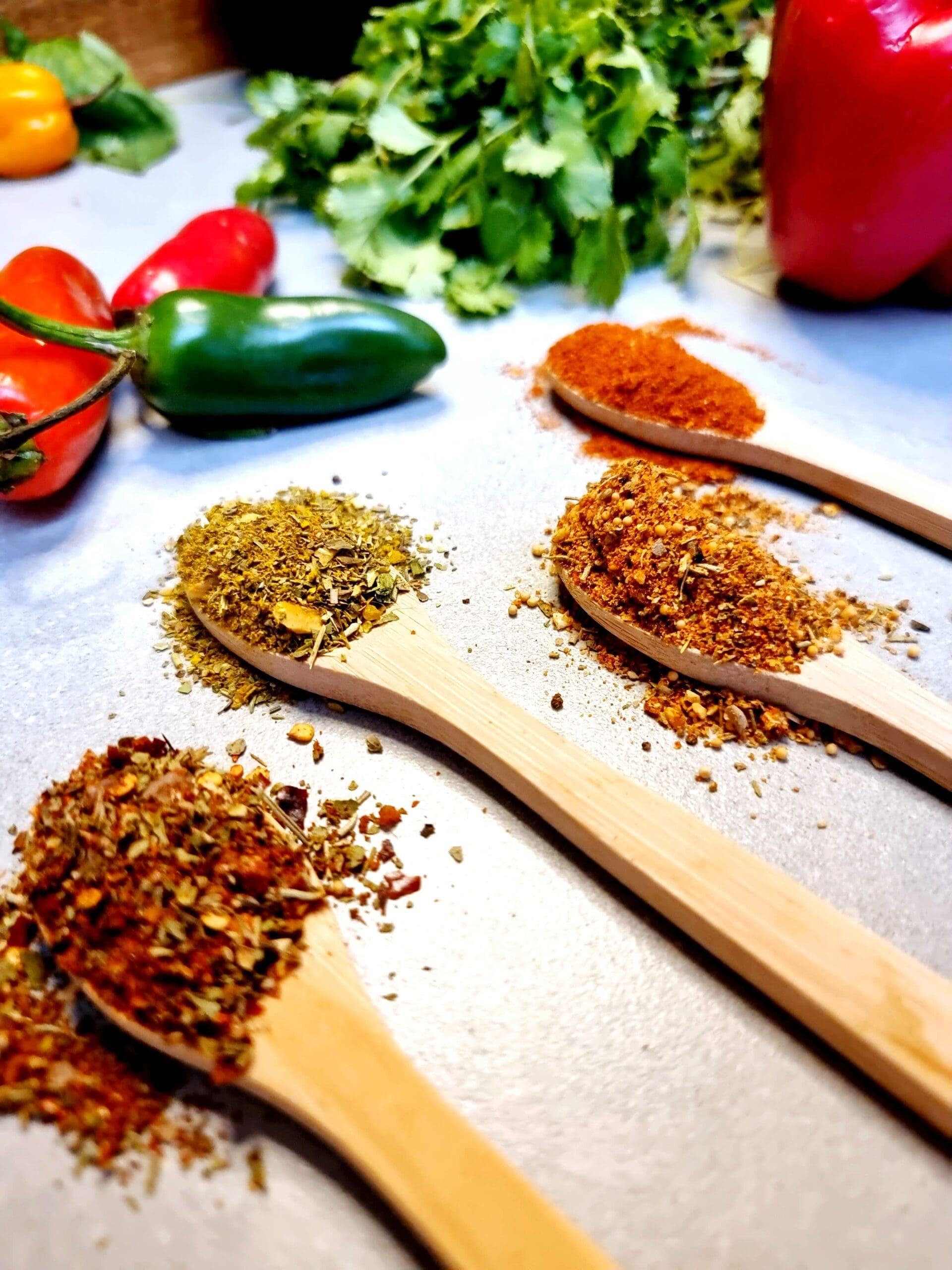
Can I Substitute The Whole Spices For Spice Powders
Yes you can. However toasting the whole spices intensifies the flavors and releases aromatic compounds. They are more fresh, adding fragrant aromatic elements to the fish.
Remember that whole roasting releases essential oils and enhances the flavor.
Spice Powders: Yes they are very convenient, but they will not offer the same level of freshness and aroma as toasting your spices will.
In this recipe, we use both the spice powders and the processs of whole roasting, which means that taste, aroma, and texture are all intensified.

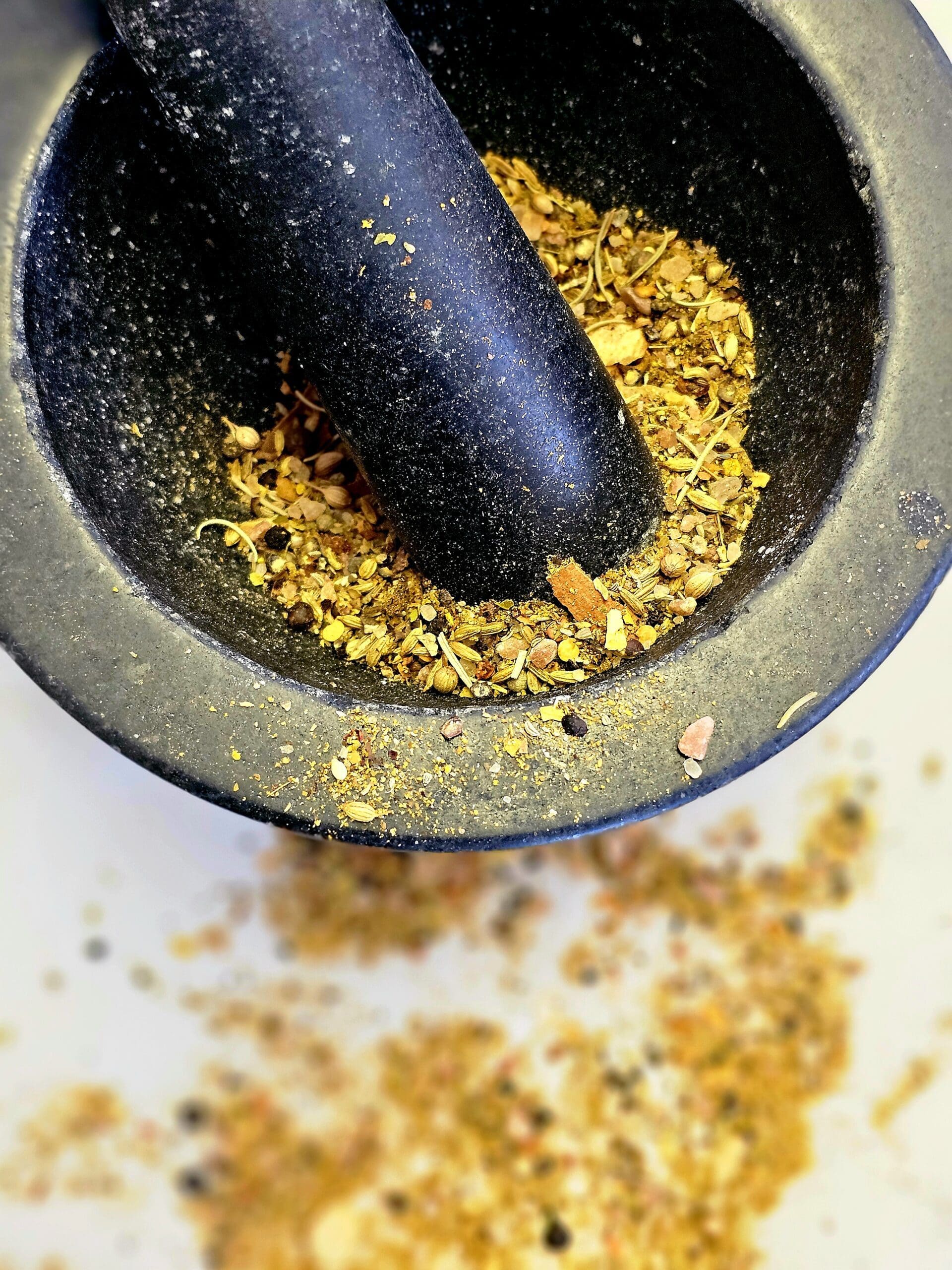
Best Fish For Pickled Fish Recipe
Any firm and white-fleshed fish varieties that hold up well to the pickling process and offer a mild flavor. Here are some examples:
- Hake: Hake is a commonly used fish in South Africa for pickled fish. It has a firm texture and a mild flavor that works well with the pickling spices.
- Kingklip: Another popular choice in South Africa, kingklip is known for its firm, flaky texture and a mild, slightly sweet taste. It's a versatile fish that takes on the flavors of the pickling sauce.
- Yellowtail: Yellowtail is a flavorful fish with a firm texture, making it suitable for pickling. Its natural richness can complement the pickling spices. Pan-Fried Yellowtail Recipe
- Snoek: In some regions, particularly in Cape Malay cuisine, snoek (a type of mackerel) is used for pickled fish. It has a distinct flavor and a firmer texture.
- Cod: Cod is a popular choice for pickled fish in various cuisines. It has a mild taste and a firm texture that holds up well during the pickling process.
- Pollock: Pollock is a budget-friendly option with a mild flavor and a firm texture. It's a good alternative if you're looking for an economical choice.
Quick Note! Choose fish that is sustainably sourced and in line with your preferences for taste and texture.
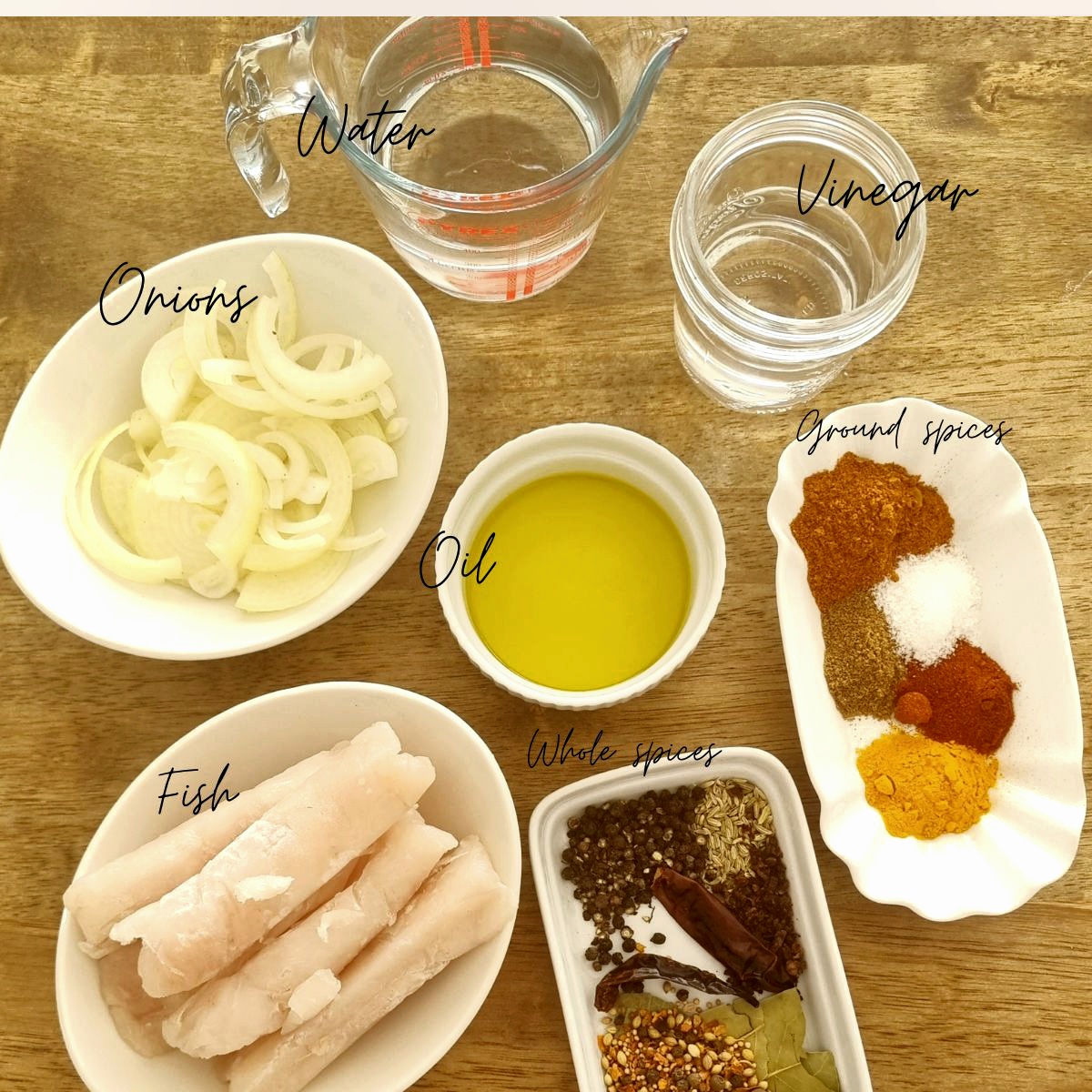
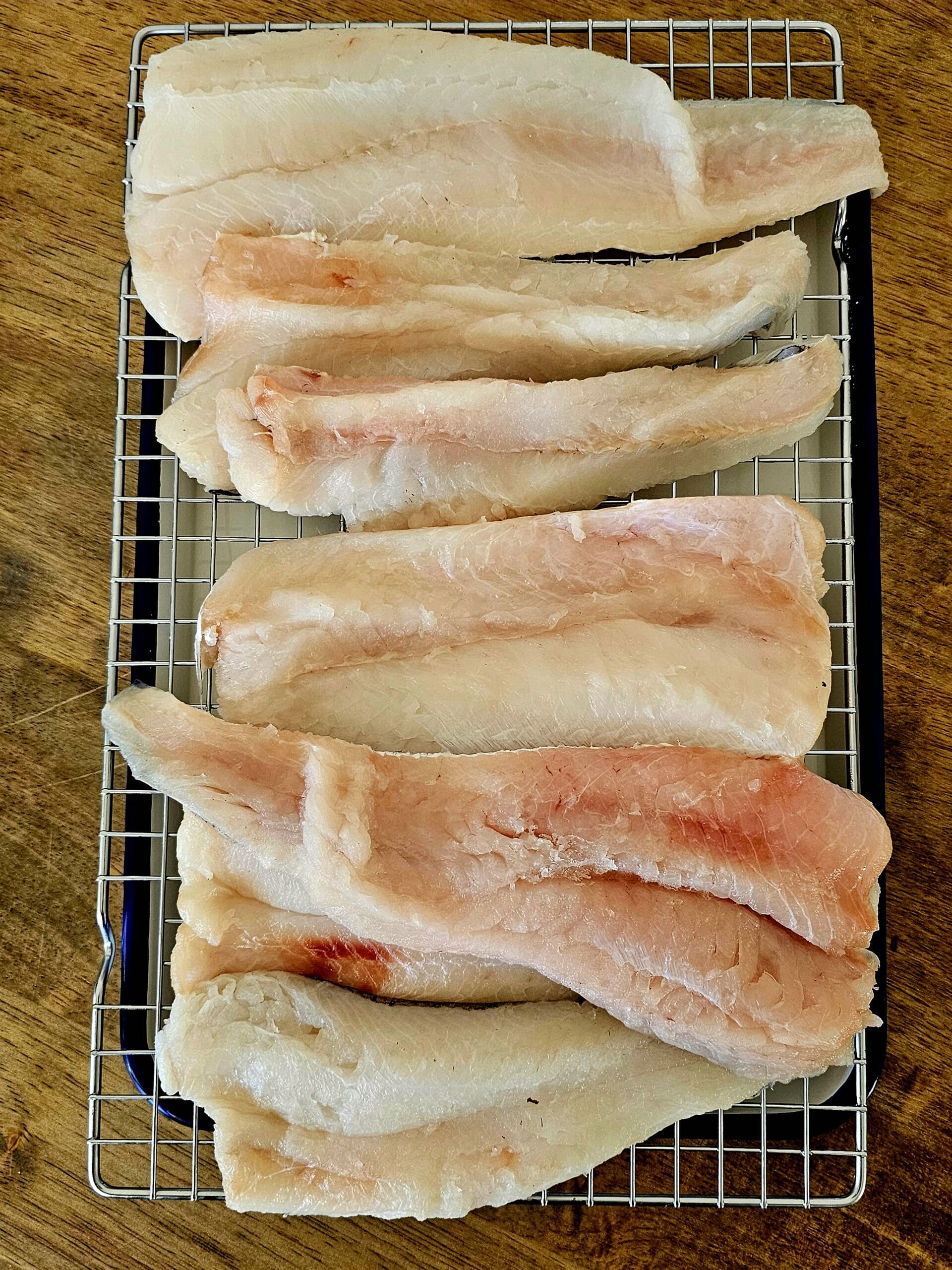
How To Make Traditional Pickled Fish Cape Malay-Style
Let's go through the key list of ingredients:
Fish: White firm fish and if you buy whole fish, cut it into large enough sqares. If they are too small, they will crumble in the pickling process.
Flour: We use flour and egg to create a batter for the fish so that it can withstand the pickling journey.
Onions: Fry the onions with ginger and garlic, add the spices and dry roast spices, salt, vinegar, black peppercorns and water.
Storage: Cool and refrigerate in an airtight container. Done.
Directions On How To Make This Pickled Fish Recipe
Once you have all the ingredients, toasted the whole spices, collected the spice powders, vinegar water, garlic, ginger and sliced the onions, you are ready to begin.
- Prep The Fish: Cut the fish into pieces around 5cm / 2″ squares or rectangles. Use the size of the palm of your hand as a guide. No need to overthink it, we just want sqares or rectangles that are more or less the same size.
- Fry The Fish - Use a large pan, we will use this pan later for everything!
- Season the fish with salt & pepper. Dredge into the flour and egg.
- Hold the fish up and shake off the excess flour before frying.
- Heat the oil in a non-stick pan then cook the fish until golden brown on both sides.
- Remove the fish to a rack or plate with kitchen paper and set aside while you toast the spices. Dont worry that it's getting cold, we will still cook it later and it will warm up.
- Whole Spices - Toast the whole spices and crush them.
- Heat a dry pan or skillet over medium-high heat.
- Add the spices and don't walk away!
- Stir and occasionally move them around with a wooden spoon to prevent them burning.
- It takes about 2 to 3 minutes for the spices to toast and you will notice the color will darken, some may even pop and crackle 🙂
- Transfer the toasted spices to a plate to cool immediately so that the toasting stops.
- Pour into a grinder and crush.
- Saute The Aromatics - Return the same pan (from frying the fish)
- Set the stove to medium heat.
- Heat the oil and then saute the garlic, ginger, onions, chili and all the spices (whole roasted and powder spices) salt and pepper, vinegar and water. Adjust to medium-low heat and simmer for 15 minutes.
- Return The Fish - Place the fried fish carefully into the aromatic onion sauce and scoop the sauce to cover the fish. Cover and simmer for another 10 minutes. At this point you can add a cup of half water and half vinegar if you need more liquid.
Would you like to save this?
I'd like to receive tips & recipes from Anosmic Kitchen.
- Storage: Carefully transfer the fish to a non-metallic dish. Pour the sauce over the fish and leave to cool down completely before covering with cling wrap. Refrigerate for a minimum of 24 hours to a week before serving with fresh coriander.
That's it! Ready to sit tight in the refrigerator for 24 hours to 3 days before serving!

Quick Note: When you transfer the fish to a non metallic-dish (last point under 'storage' above), pour all the liquid with it, don't leave anything behind. The fish will absorb the liquid over the next few days as it sits in the refrigerator.
The process of the fish resting for a few days in the fridge is how it self preserves and absorbs the flavors of sweet, sour and savory from the spices. All this contributes to the overall taste and texture.

What Do We Serve With Pickled Fish?
This traditional cape malay dish can be eaten on it's own but it's more than expected to serve pickled fish with hot cross buns. This is one of those wonderful recipes where the longer it stands in the fridge the better it tastes! Hot cross buns, butter and fish, enjoy!

Recipe Notes
Skillet/Pan: Use a large skillet, large frying pan or large pot.
Fish: Use room temperature fish pieces, dry them, coat and shake the flour off to avoid any excess flour going into the pan. The flour must be a light coating.
Consistency: If you prefer more liquid increase the quantity of the white wine vinegar & water by small amounts just before transferring for storage to a non-metallic container.
Flour: When dipping the fish into the flour try using as little flour as possible because you want to lightly coat the fish not have parts of flour in your pan. Also I find that the more flour you use the longer the cooking process takes and it also means that you have to keep changing the oil so I would suggest keeping it light and cooking on medium heat in a non stick pan to avoid burning the oil.
Oil: Use any oil! Vegetable oil, a little cooking olive oil for the onions, it all works.
Spices: Dry Roast the whole spices to enhance the fragrance. See notes on this above under 'substituting whole and powder spices'
Vinegar: You can use white wine vinegar (naturally fermented) and brown vinegar but avoid white spirit vinegar! White spirit vinegar (higher acidic content) can overpower the dish. White grape vinegar has more of a delicate flavor and is often used for marinades and dressings.
Sugar: Feel free to add a little sugar to balance out any acidity.
Storage: Use a non metallic container for storing the fish.
If you love fish recipes, click on the links below for more:
How long Does Pickled Fish Last?
Although pickled fish lasts up to six weeks when refrigerated, it barely gets passed day one! Personally, I ration the sealed containers of fish to last throughout the Easter weekend.
Quick Note! To get a head start on your pickled fish you can split the prep time and cooking over 2 days.
Seafood Recipes
- Easy Pan Seared Salmon Fillets With Lemon Garlic Butter
- Easy Healthy Salmon Dinner Recipe (Oven Baked)
- Salmon Pasta Recipe Without Cream
- Fennel Air Fryer Salmon
- Seafood Marinara

The longer the fish sits in the pickling liquid, the more pronounced the pickled flavor will become.
Star Rating
If this recipe peaked your taste buds, your enjoyed making it, celebrating then please leave a comment below and give us a 5 star rating!
Print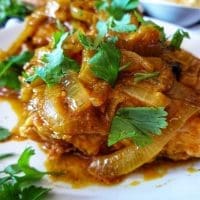
Traditional South African Pickled Fish Cape Malay-Style
- Total Time: 50 minutes
- Yield: 8 people 1x
Description
A spicy, slightly hot, delicious and traditional pickled fish recipe. To get the best taste from this pickled fish prepare it 2 to 3 days before serving.
Ingredients
Fish Batter
- 1 kilo firm white fish (2.26lbs), Cut the fish into pieces around 5cm / 2″ squares or rectangles. Use the size of the palm of your hand as a guide.
- ⅓ cup oil, sunflower or vegetable oil, use more as needed
- ½ cup flour
- 4 eggs, beaten
- ½ tsp salt and pepper, to taste
Dry Roast Spices
- 4 bay leaves, stems removed
- 1 tsp fennel seeds
- 5 ml coriander seeds
- 1 tsp cumin seeds
- 1 tbsp peppercorns
- 6 cloves
Spice Powders
- 1 tsp turmeric
- 1 tsp fish spice
- 1 tsp paprika
- 2 tbsps masala curry powder,
- 1 tsp salt
Onion Pickle
- 500 grams onions, medium size, aproxiamately 4 to 5 onions, sliced into 5mm slices
- ¾ cup vegetable oil/canola oil
- 2 cups white wine vinegar, approxiamately 500ml
- 1 ½ cups water
- 1 fresh chili, de-seeded & sliced, or ½ tsp chili flakes
- 4 garlic cloves, minced
- 1 thumb size piece of ginger, grated
Instructions
- Prep the fish - The fish (if frozen) should be defrosted and at room temperature before starting. Cut the fish into squares if not already portioned. The fish squares should be approxiamately 5cm / 2″ squares or rectangles or the size of the palm of your hand. No need to overthink it, we just want sqares or rectangles that are more or less the same size.
Pat the fish dry with a kitchen towel. - Fry The Fish - Use a large pan, we will use this pan later for everything!
Season the fish with salt, pepper and fish spice.
Dredge into the flour and egg. Hold the fish up and shake off the excess flour before frying.
Heat the oil in a non-stick pan then cook the fish until golden brown on both sides. Remove the fish to a rack or plate with kitchen paper and set aside while you toast the spices. Dont worry that it's getting cold, we will still cook it later and it will warm up. - Whole Spices - Toast the whole spices and crush them.
Heat a dry pan or skillet over medium-high heat. Add the spices and don't walk away! Stir and occasionally move them around with a wooden spoon to prevent them burning. It takes about 2 to 3 minutes for the spices to toast and you will notice the color will darken, some may even pop and crackle 🙂
Transfer the toasted spices to a plate to cool immediately so that the toasting stops. Pour into a grinder and crush. - Saute The Aromatics - Return the same pan (from frying the fish) to the stove and reduce to medium heat. Heat the oil and then saute the garlic, ginger, onions, chili and all the spices (whole roasted and powder spices) salt and pepper, vinegar and water. Adjust to medium-low heat and simmer for 15 minutes.
- Return The Fish: Place the fried fish carefully into the aromatic onion sauce and scoop the sauce to cover the fish. Cover and simmer for another 10 minutes. At this point you can add a cup of half water and half vinegar if you need more liquid.
- Storage: Carefully transfer the fish to a non-metallic dish. Pour the sauce over the fish and leave to cool down completely before covering with cling wrap. Refrigerate for a minimum of 24 hours to a week before serving with fresh coriander.
Notes
- Please taste the pickled fish as you go and adjust this recipe accordingly because each person has their own taste. For example, you might want to add a hint of sugar for sweetness or to balance out the acidity in the vinegar. So I would suggest that you taste as you go along.
- Also, there are a load of onions in this recipe but that's how we like it with loads of onions. Besides, it tastes so good every single onion is eaten! Feel free to half the onion quantity.
Can I Make Pickled Fish with spice powders only and omit the whole spices?
Yes you can. However toasting the whole spices intensifies the flavors and releases aromatic compounds. They are more fresh adding fragrant aromatic elements to the fish.
Spice Powders: Yes they are very convenient, but they will not offer the same level of freshness and aroma as toasting spices will.
Happy Easter!
- Prep Time: 20 minutes
- Cook Time: 30 minutes
- Category: Main Course
- Cuisine: Cape Malay, South African
Nutrition
- Calories: 496
- Sugar: 4
- Sodium: 640
- Fat: 43
- Saturated Fat: 6
- Carbohydrates: 20
- Fiber: 3
- Protein: 7
- Cholesterol: 109

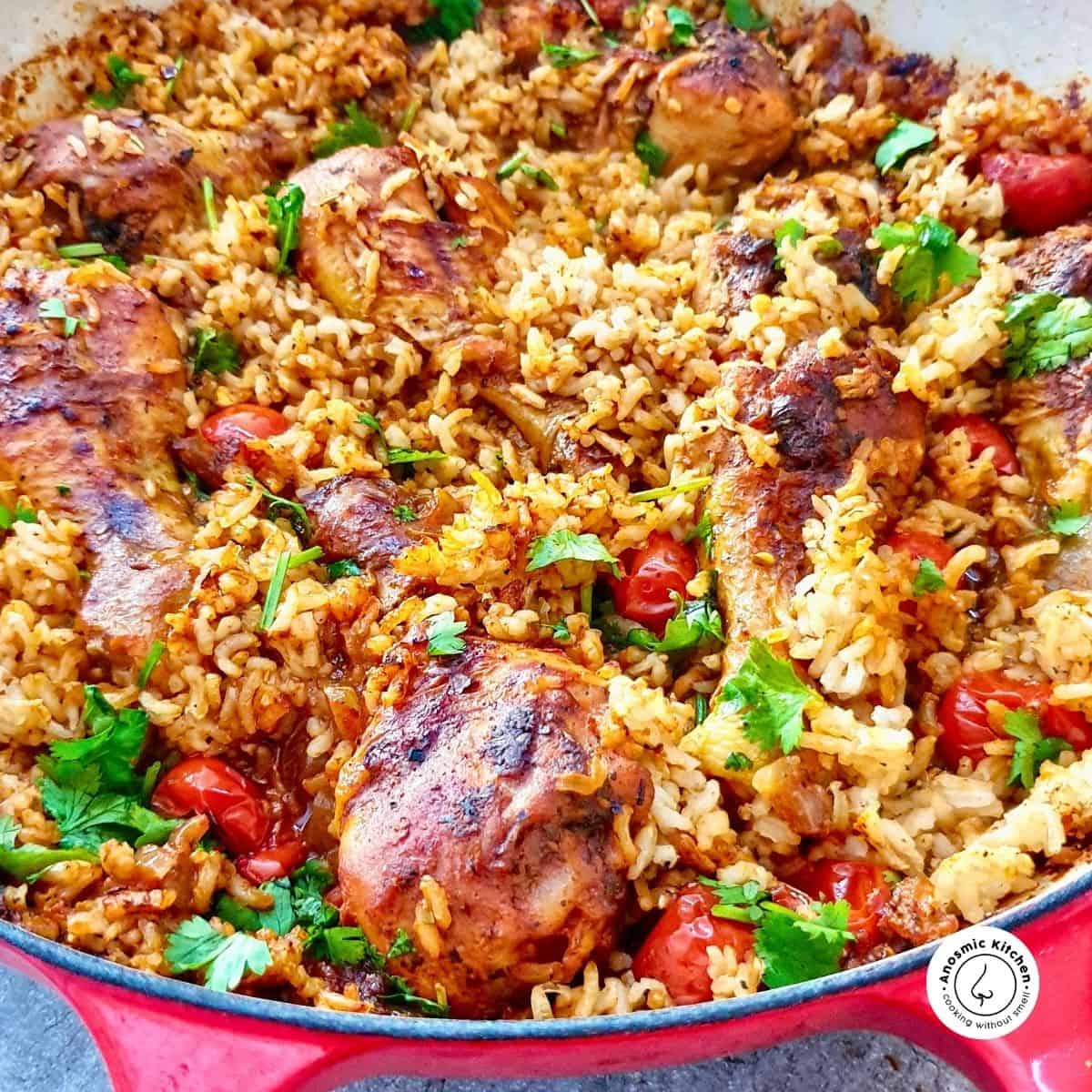



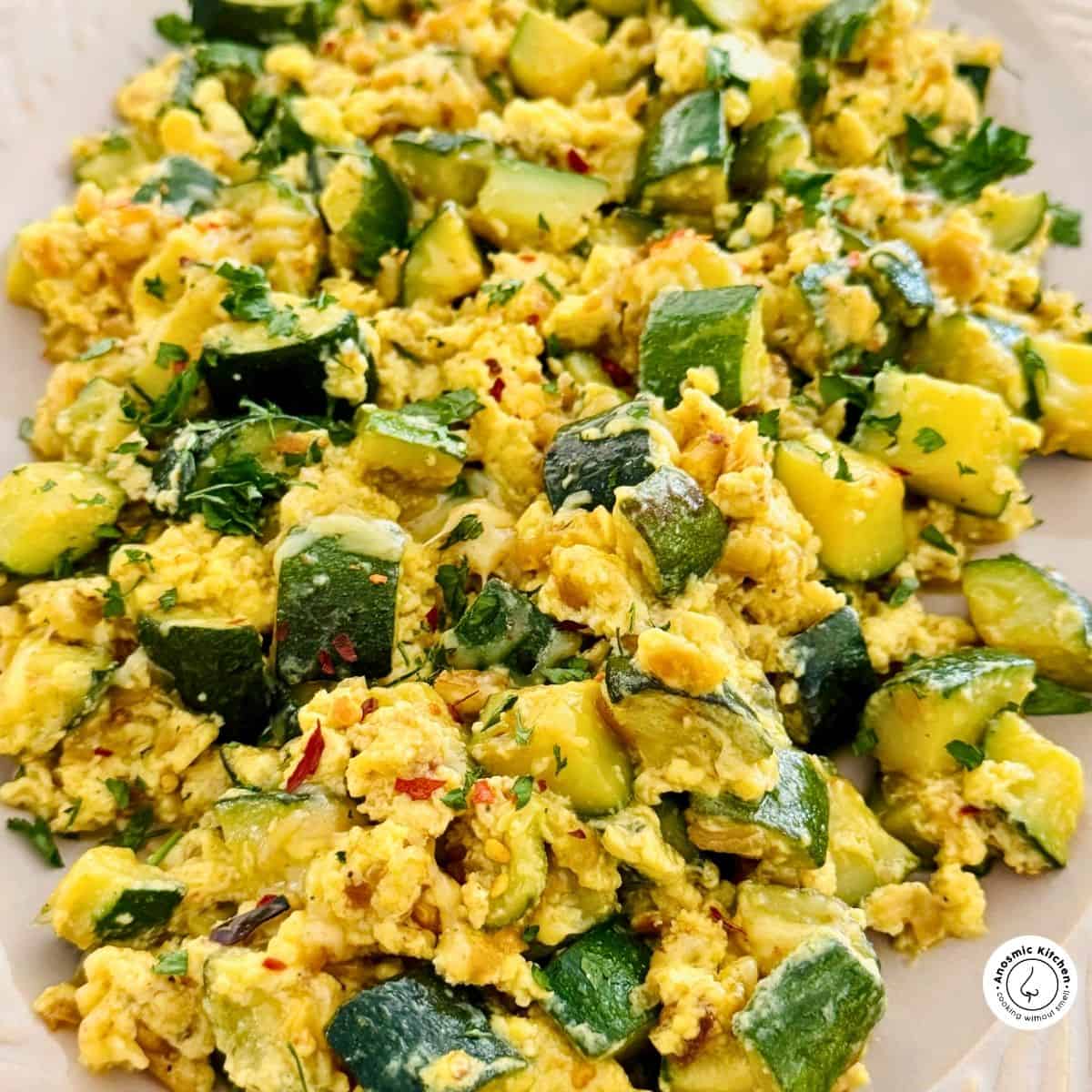
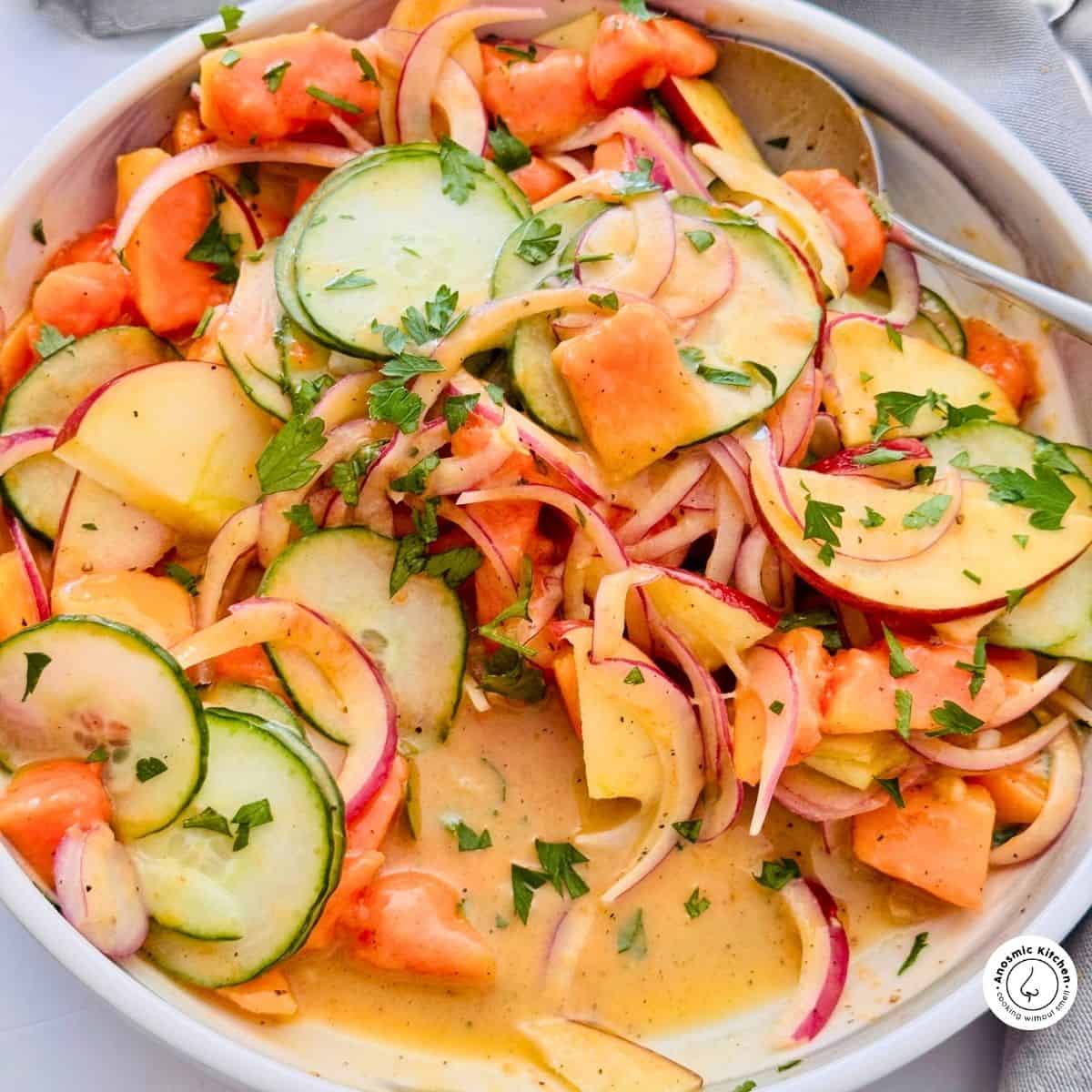


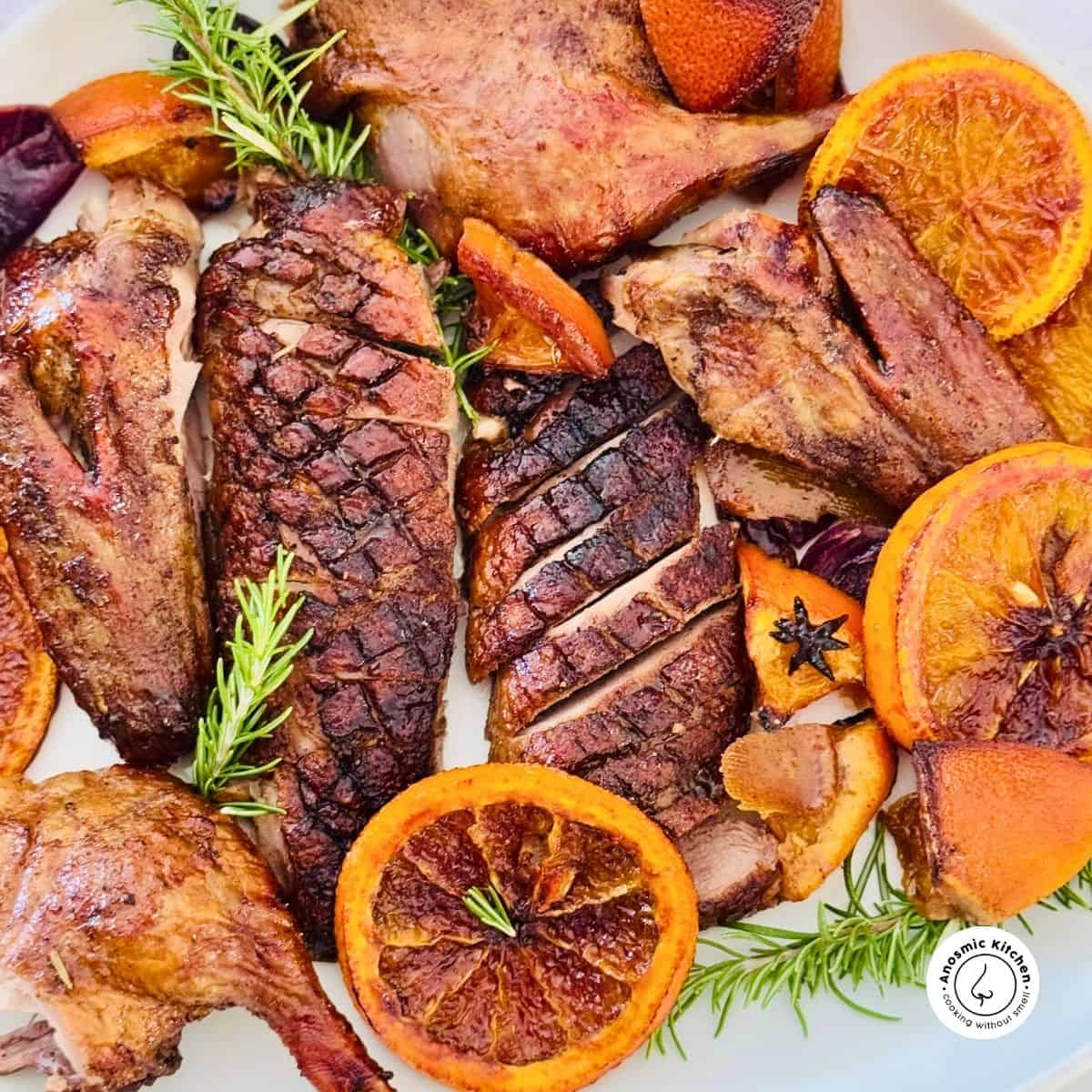



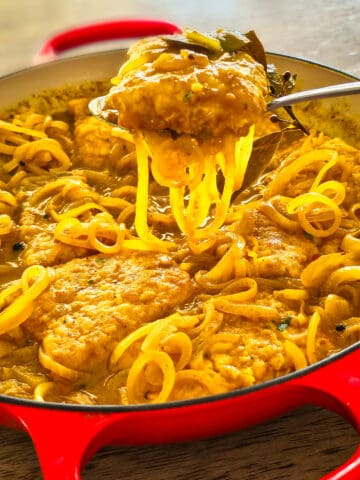
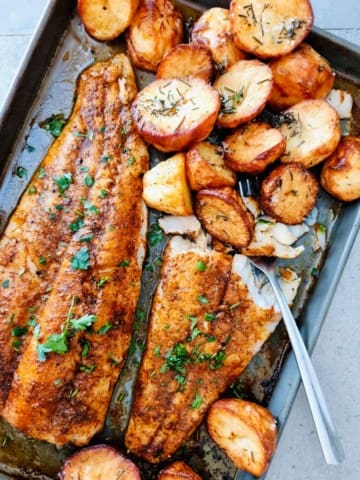


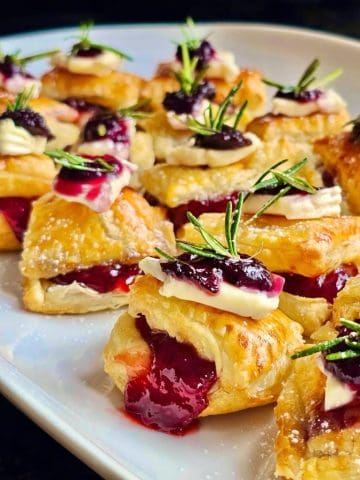

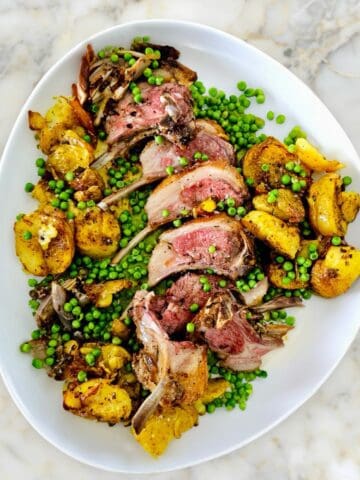
Erika says
Hi there ????
I am making your pickled fish tomorrow...
Can't wait... have a question... could I bottle this pickled fish? If so... For how long do you think?
Regards Erika
Miranda's Anosmic Kitchen says
Hi Erika, enjoy the pickled fish and thank you being here. I've actually never bottled my pickled fish so I don't know. Normally when it's made its all eaten up 🙂 Happy cooking!